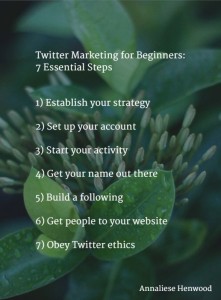In the recent years, content marketing has become the focal point of companies that seek to build brand authority, awareness, and growth – and rightfully so. According to the Content Marketing Institute, the most effective marketers allocate 42% of their budget on content marketing, while the least effective only allocate 15%.
With technology, it’s easier for businesses to spread their message and connect with their target audience. But if you really want your brand to stand out, you must keep on pursuing new frontiers that can give you the competitive edge.
One area of digital marketing you seldom hear about would be mobile advertising, but it’s currently undergoing rapid growth. According to statistics, $ 143 billion will be spent on mobile advertising this 2017 – a two-fold increase from $ 71 billion in 2015.
Mobile advertising encompasses all advertising activities that target smartphone and tablet users. This primarily concerns ad placements on mobile websites, apps, games, and app stores. Promotional content delivered via SMS also qualify as a form of mobile advertisement.
To determine if mobile advertising is the right step for your brand, consider the following pros and cons:
Pros
1. Mobile Ads are Cheaper
Mobile ads have been historically cheaper than web or print advertisements. This is especially true for Android banners with $ 1.25 in lowest Cost-Per-Mille (CPM). On average, mobile banner ads are priced at $ 1 CPM while the lowest for desktop ads sits at $ 6 CPM.
2. A Massive Market
Studies estimate that there will be over 5 billion mobile phone users by the end of 2017. This involves every possible demographic that matters to every brand. So, whether you sell construction supplies or offer marketing consultancy services, mobile advertising definitely deserves a second look.
3. Immediate Impact
According to statistics, 90% of text messages are read in 3 minutes after being sent. This is thanks to the fact that nearly everyone has their phone with them 24 hours a day. Furthermore, branded text messages have a whopping 98% open rate, while emails are stuck at 22%.
4. The Internet is Going Mobile
The number of mobile internet users has already surpassed that of desktop users back in 2016. Even more recently, Android has overtaken Windows for the first time as the most popular OS in terms of internet usage.
5. Mobile Content is Easier to Make
Due to the limited screen real estate in mobile devices, it’s easier for content creators to highlight their core message, eliminate distractions, and make consumption a breeze for users. Advertisers are also guaranteed that their placements will get reasonable visibility – whether in-app or through a mobile site.
6. In-App Advertising
On average, smartphone users spend 5 hours a day on their devices. 92% of this time is dedicated on apps, including Facebook, YouTube, and games.
Despite the low average CPM of only $ 5, in-app ads have the advantage of being weaved seamlessly into the experience – often appearing on points where the user’s eyes are still glued to the screen.
Cons
1. Too Many Devices
Unlike PCs, mobile devices are largely diverse in terms of screen size, OS version, web browser, and hardware. This makes it trickier to create multi-platform campaigns and limits you from utilizing device-specific features for more dynamic experiences.
2. Mobile Ad Blockers
The rise of ad-blocking software is probably the biggest threat to the feasibility of mobile advertising. According to the 2017 Adblock Report by PageFair, up to 380 million devices now have an ad-blocking software installed. Hopefully, the majority of this number reflects users who are highly unlikely to convert via mobile ads in the first place.
3. Asking for Phone Numbers
If you’re interested in SMS marketing, then the first obstacle you need to overcome is obtaining your audience’s phone numbers. Unfortunately, this task isn’t as easy as asking for their email address.
One strategy is to offer exclusive bonuses to be delivered via SMS. These must not be the same as the offers you provide email subscribers or social media followers. You can also integrate SMS verification in your registration process as an option, but not as a mandatory step.
Conclusion
As a marketer, you must dedicate every fiber of your being in search of the next opportunity that will get you ahead. Mobile advertising is currently ripe for the picking, but you should first consider your business goals and the preferences of your market. You can also refer to this post on the ten important mobile advertising FAQs for a more informed decision.
Business & Finance Articles on Business 2 Community(231)
Report Post






